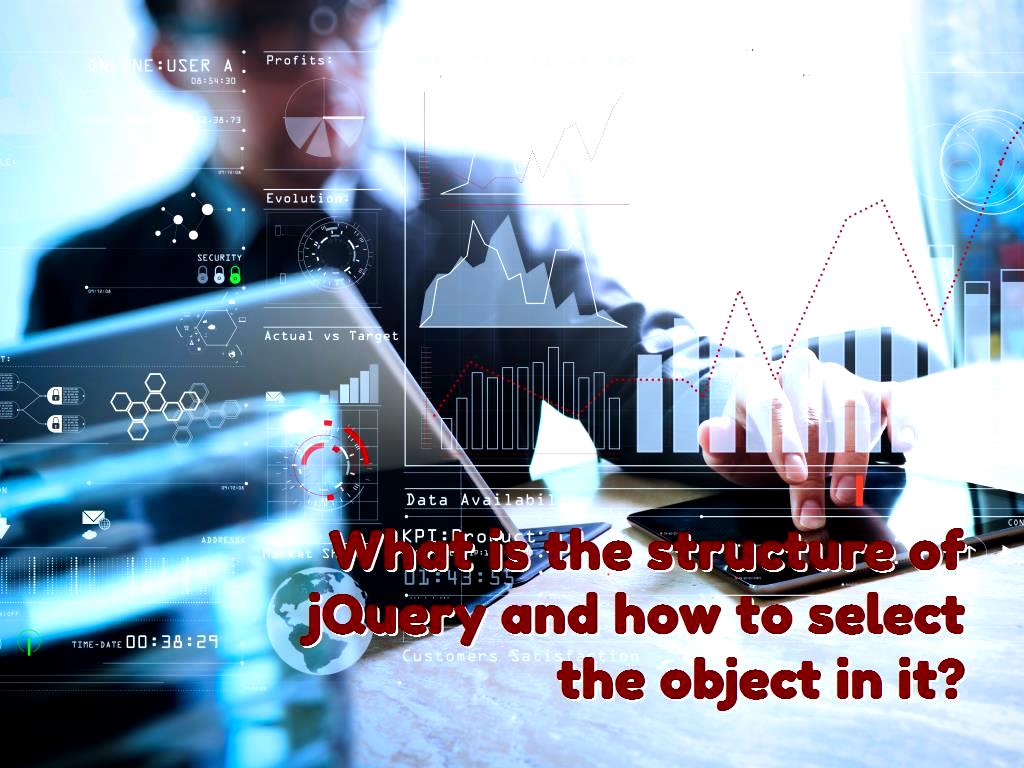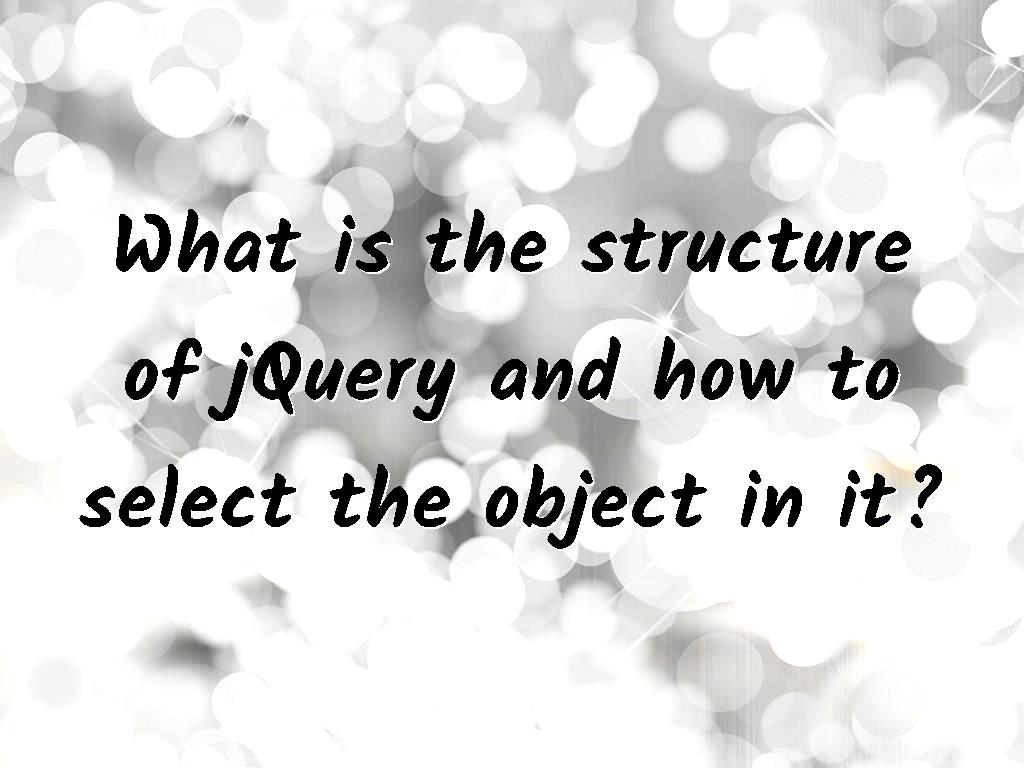What is the structure of jQuery and how to select the object in it?
6 minute(s) read | Published on: Jul 23, 2021 Updated on: Dec 14, 2021 |
There are different programming languages, each of which has its fans. Each has various features that are possible to use in the right place by mastering them so that you can take advantage of them as well as possible. Among these programming languages, we can mention JavaScript that allows you to convert content from static to dynamic and enable different users to interact well with the range, which is the key to success.
In JavaScript, like all programming languages, there are various features that you can learn to produce valuable content. One of the features of this language is its libraries, among which we can mention jQuery, which we are going to discuss in more detail below.

What is jQuery?
It is so popular among programmers. It is a JavaScript library that allows you to easily navigate files and access predefined features. Using it can allow you to perform many complex tasks with a few simple solutions. There is no need to write lots of code lines to achieve your goal with just one line of code. You can reach the desired goals, jQuery also simplifies many complicated things from JavaScript, like AJAX calls and DOM manipulation.
The structure of this:
It consists of a JavaScript file that contains the essential functions of DOM, Ajax, events, and effects. Finally, it includes a wide range of application components that can be used to edit web project elements. With the help of this library, it is possible to make the changes you intend to make in the content, and through the JavaScript programming language, it is possible to do it in more straightforward ways instead of complex ways. JQuery also simplifies working with Ajax. This library optimizes site loading technology, especially if a browser interface is involved. With its help, Ajax can be quickly configured and used in various browsers, and even older versions are covered. It can typically fill the gap between implementing JavaScript in different browsers.
In addition, when you can master it, you will eventually be able to execute all the commands you want by writing just one line of code instead of writing multiple lines of it.
Syntax:
This issue is significant and generally involves selecting HTML elements that the purpose of choosing is to make changes that will eventually make the content more attractive.
The basic syntax is:
$(selector).action()
- A $ sign to define / access jQuery
- A (selector) to "query (or find)" HTML elements
- A jQuery action () to be performed on the element (s)
Object:
This part is very complex and essential. The Document Object Model, which stands for DOM, represents an HTML document. In other words, a DOM element can be considered a "piece" of a web page.
Selectors:
This allows you to select HTML elements and implement the changes you want. While selecting existing HTML elements, this selection may be based on the various properties of the elements, their names, etc. After selecting the desired part, as we have mentioned before, you can implement your desired changes in them and achieve your goal. The point is that all selectors start with a dollar sign and parentheses. The jQuery element selector uses element names to select the element it intends to modify.
You may want to select all the
elements on a page, so review the example below to learn more about it.
The result of the above example will be that after clicking on Click me to hide paragraphs, all
elements will be hidden in it.
This is a heading
This is a paragraph.
This is another paragraph.
Click me to hide paragraphs.
#id :
Another case in which an element may be selected is the id attribute of an HTML tag. For example, when a user clicks on a button, the element with id = "test "will be hidden.
The result of the above example will be as follows.
This is a heading
This is a paragraph.
This is another paragraph.
Click me
After clicking the Click me button, you will get the following result in this example.
This is a heading
This is a paragraph.
Click me

.class :
In this case, to select an element, you need to write a character and then follow the class name. For instance, when a user clicks on a button, the stuff with class = "test" will be hidden in the example mentioned below.
The result of the above example will be as follows.
This is a heading
This is a paragraph.
This is another paragraph.
Click me
In the example above, as we have mentioned, the class is used to select elements, in which, after clicking the Click me button, you can see the following result.
This is another paragraph.
Click me
$("[href]") :
Many other things can be used to select different elements in the content, one of which is this item. There is an example in the following to understand it better, which sets all elements with a href attribute.
The result of the above example will be as follows.
This is a heading
This is a paragraph.
This is another paragraph.
HTML Tutorial
CSS Tutorial
Click me
After clicking the Click me button, you can see the following result in this example.
This is a heading
This is a paragraph.
This is another paragraph.
Click me
$("tr: odd") :
As we have mentioned, different factors may be used to select the available elements, one of which will be mentioned in the following in which all odd

Last word:
This library is significant among different programmers. It can provide you with better coding because you can do coding more quickly and accurately with its help to do better coding with more mastery in this field.
Click to analyze your wesbite SEO